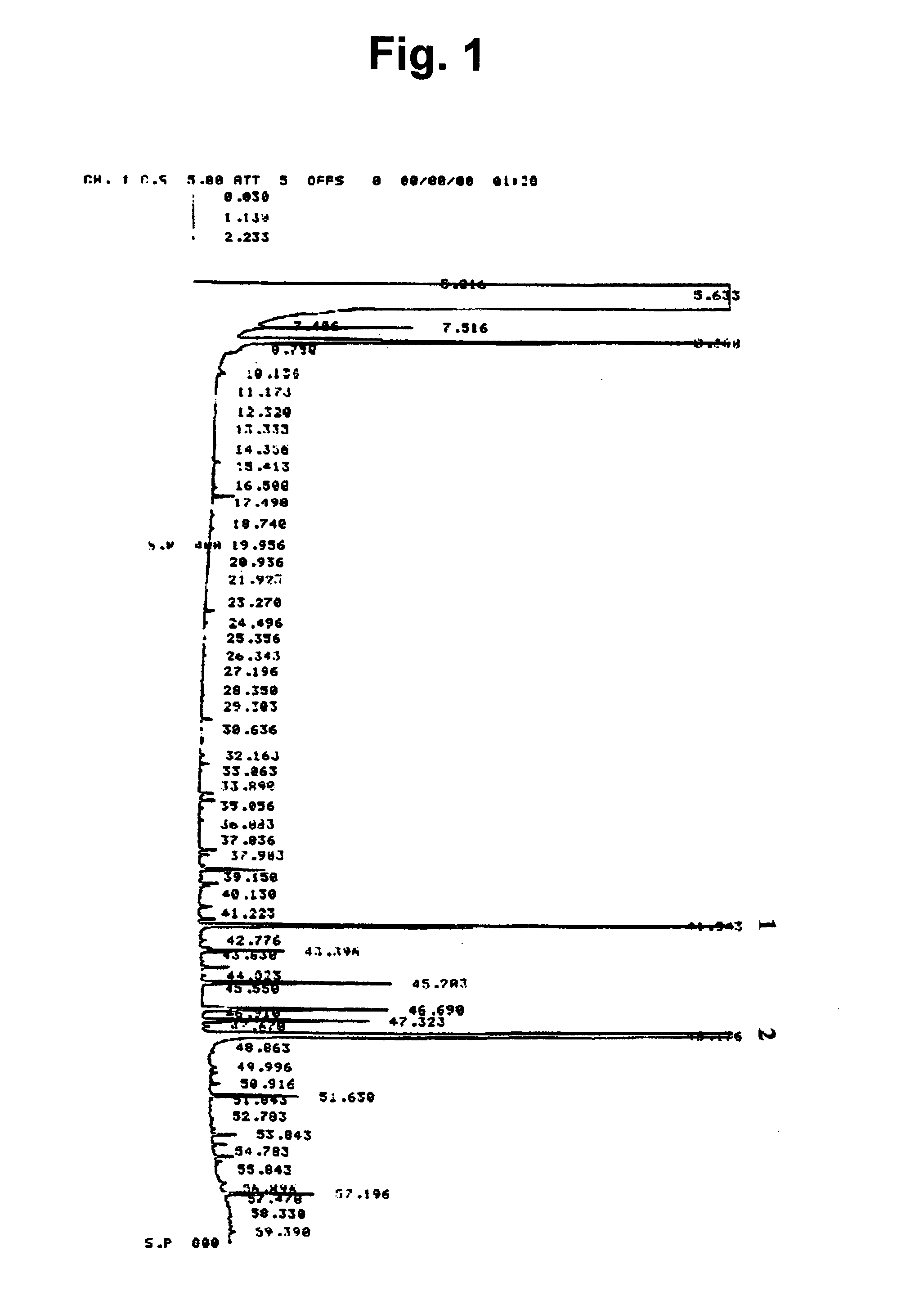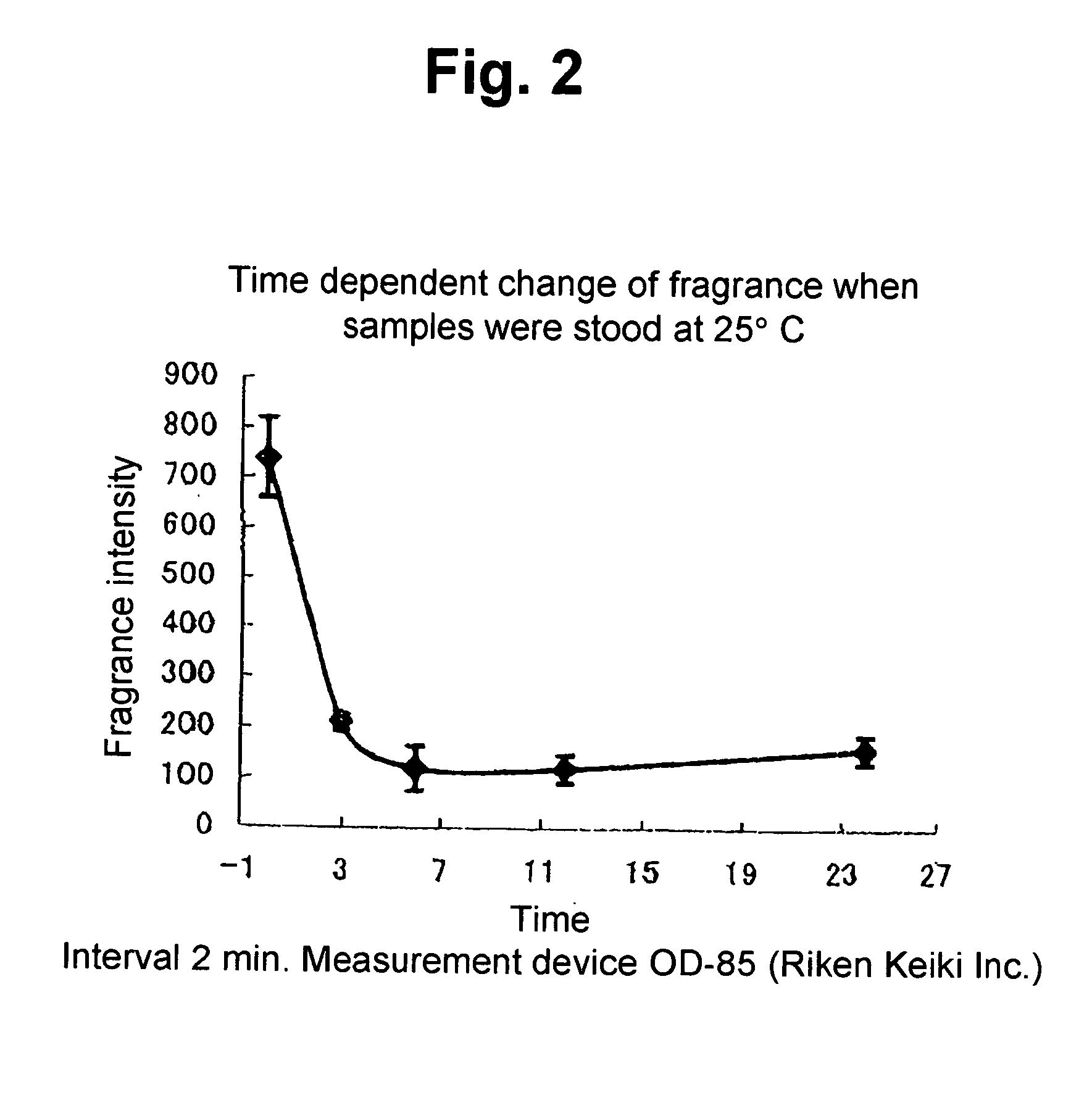Anxiolytic composition comprising essential oil derived from plants as active ingredients, anxiolytic comprising thereof, and a producing method thereof
- Summary
- Abstract
- Description
- Claims
- Application Information
AI Technical Summary
Benefits of technology
Problems solved by technology
Method used
Image
Examples
example 1
(1) Reagents
[0086] In order to produce the composition for the percutaneous anxiolytic and the percutaneous anxiolytic, the following reagents are used.
(1-1) Essential Oils
[0087] Rose oil (Rose de Mai Absolute) and l-menthol is purchased from Ogawa & Co., Ltd.
(1-2) Others
[0088] As PVA, Shin-Etsu Poval C-17GP was purchased from Shin-Etsu Chemical Co., Ltd., and Goselan L-3031 was purchased from Nippon Synthetic Chemical Industry Co., Ltd. As acrylic type of water-absorptive resin, Sunfresh (registered trademark) was purchased from Sanyo Chemical Industries, Ltd. As activated charcoal, Shirasagi P was purchased from Takeda Pharmaceutical Company Limited. As Zeolite, Zeolum (Registered trademark) is purchased from Tosoh Corporation. As Chitosan, Koyo Chitosan was purchased from Koyo Chemical Company Limited.
example 2
Preparation of the Composition for the Percutaneous Anxiolytic, and the Percutaneous Anxiolytic
(2-1) Preparation of the Carbon-Coated Particle
[0089] The carbon coated particles are prepared according to the recipe shown in the following table 1. Note that each piece of the agent is regulated so as to contain 1.1 mg of each carbon coated particle prepared by using the amount shown in the table 1, when the pharmaceutical agent (Name of the agent is ANX-A to ANX-C) is prepared.
TABLE 1No. of the carboncoated particleContents (weight %)123Rose Oil1.50.750.50P V A (Shin-Etsu Poval)100100100Activated Charcoal121212Total113.5112.75112.5
[0090] For example as ANX-A, the Rose Oil was weighed at the amount shown in the table 1 and put them in 500 ml of a transparent glass closed vessel. PVA (Shin-Etsu Poval C-17GP) was added into the vessel and mixed with the Rose Oil at the room temperature to prepare the essential oil coated particle. Subsequently, the activated charcoal was added into t...
example 3
Analysis of the Rose Oil Components
[0097] Volatile components in the Rose Oil were analyzed by using gas chromatography (GLC), and gas chromatography linked mass spectroscopy (GC-MS).
(3-1) Gas Chromatography (GLC)
[0098] Gas chromatography (GLC) analysis was carried out under the following conditions:
[0099] Gas chromatograph (GLC): HITACHI G-3000 (Hitachi, Ltd.)
[0100] Column: TC-WAX Bonded (60 m×0.32 mm i.d.)
[0101] Column temperature: 40° C. to 220° C. (3° C. / min. temperature increase)
[0102] Temperature of sample injection part: 250° C.
[0103] Carrier gas: Helium 0.8 kg / cm2
[0104] FID: Hydrogen gas 1.4 kg / cm2
[0105] Air: 1.1 kg / cm2
[0106] In order to identify the components, phenylethy alcohol and citronellol used as Internal standard were injected into the column in similar way, and measured their retention times respectively. Based on their retention times, the components included in the Rose Oil were identified.
[0107] A chromatogram of GLC is shown in FIG. 1. As shown in ...
PUM
 Login to View More
Login to View More Abstract
Description
Claims
Application Information
 Login to View More
Login to View More - R&D
- Intellectual Property
- Life Sciences
- Materials
- Tech Scout
- Unparalleled Data Quality
- Higher Quality Content
- 60% Fewer Hallucinations
Browse by: Latest US Patents, China's latest patents, Technical Efficacy Thesaurus, Application Domain, Technology Topic, Popular Technical Reports.
© 2025 PatSnap. All rights reserved.Legal|Privacy policy|Modern Slavery Act Transparency Statement|Sitemap|About US| Contact US: help@patsnap.com



